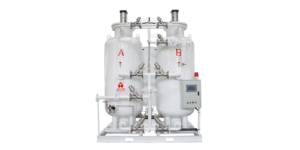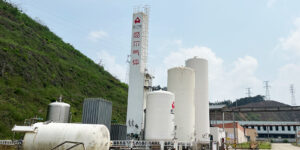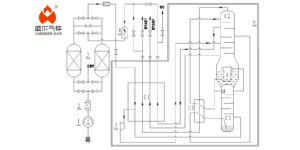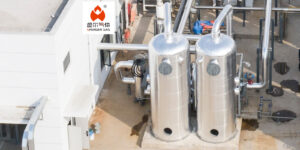Cryogenic air separation units convert air into liquid at low temperatures, allowing different gases to be separated and purified based on their varying evaporation temperatures. This process yields high-purity nitrogen, oxygen, and other gases required for industrial use. Like many other large mechanical systems, air separation units present various hazards during operation. If operators can clearly identify the sources and causes of these hazards, they can minimize risks and ensure truly safe production.
Hazard Source 1: Carbon Deposition
Carbon deposition refers to the buildup of residues resulting from the incomplete combustion of fuel and lubricant oil mixtures. Its main components are light acids, asphaltenes, and tar. Directly linked to the formation of deposits and the “lubricant oil” in compressors.
Carbon deposits are visible accumulations of carbon and black gummy substances inside the compressor’s intake and exhaust valves, intake ducts, main unit, oil lines, and pipelines. These deposits can also be found in the nooks and crannies of fixed compressor parts as sludge. New screw compressors do not produce carbon deposits in a short time. However, poor maintenance or harsh environmental conditions can lead to rapid carbon buildup. This formation mainly stems from the accumulation of residues in the lubricant oil. Which leaves behind slag in the oil passages under high temperatures.
How to Prevent Carbon Deposition?
Controlling the conditions that lead to carbon deposition involves several measures, primarily focusing on the source—lubricant oil.
Choose high-quality lubricant oil. High-quality lubricants provide better protection for compressors, contain fewer impurities. And thus reduce the chances of carbon deposition.
Clean carbon deposits in compressors. Methods include disassembly cleaning, partial disassembly cleaning, and closed-system cleaning. Closed-system cleaning is the most effective. Introduce a cleaning agent into the compressor oil system, allowing it to circulate naturally through the oil passages. Cleaning out the carbon deposits, which are then expelled from the system.
Hazard Source 2: Lightning
Lightning is a common natural phenomenon that poses significant risks to electrical equipment due to its unpredictability, instantaneous nature, and strong discharge. Lightning can severely impact the normal production and safe operation of air separation equipment.
How to Prevent Lightning Damage?
Install lightning rods. Our company equips the top of the cold box with lightning rods to mitigate the effects of lightning strikes.
Prevent static electricity accumulation and lightning strikes. Liquid oxygen has a high unit resistance and is prone to generating static electricity. Without proper grounding, it can produce thousands of volts of static electricity. Therefore, it is crucial to regularly inspect the grounding of air separation units.
Other preventive measures include
Regular cleaning. After 2 years or longer of operation, clean and degrease the rectification tower and liquid oxygen circulation system. Soak the main cooling unit for 8 hours, then thoroughly blow it out with air at sufficient pressure and fully dry it by heating.
Prevent oil ingress. Oil entering the air separation unit can contaminate adsorbents and hinder acetylene adsorption. Therefore, eliminate roots blowers that may introduce oil into the air and enhance the maintenance of expansion machines.
Strengthen operation, maintenance, and management. Take extra care in removing harmful impurities. Regularly calibrate monitoring instruments and devices. Avoid prolonged operation beyond recommended periods and timely shutdowns for heating and purging. Adhere strictly to process disciplines to eliminate unauthorized operations.
Safety is the foundation and guarantee of all tasks and a long-term, arduous responsibility. As practitioners of air separation equipment, we must take proactive measures, work diligently, ensure production safety, elevate safety work and overall management to new levels, and promote sustained, healthy, and rapid development of all activities.








